Select Language

Kevin Warsh, a potential Federal Reserve chair pick by President Donald Trump, called for a major overhaul of the central bank during a CNBC interview Thursday.
Warsh said the U.S. needs a new "Treasury-Fed Accord" similar to the one established in 1951, describing the current economic situation as a "transformational moment" in economic history.
"The last thing we need is ’continuity’ at the Fed," Warsh stated, pointing to what he called a "credibility crisis" at the central bank.
While emphasizing that he "strongly believes" in the Fed’s independence, Warsh criticized the institution for focusing on diversity, equity and inclusion (DEI) and "full inclusive employment," calling this a "key mistake."
Warsh directly blamed the Federal Reserve for inflation and suggested its hesitancy to cut interest rates represents a further loss in credibility.
He also expressed support for President Donald Trump’s public criticism of the Fed, saying "Trump is right to be pushing Fed publicly."
Warsh concluded that the Federal Reserve "must get out of fiscal, political business" to restore its effectiveness and credibility.
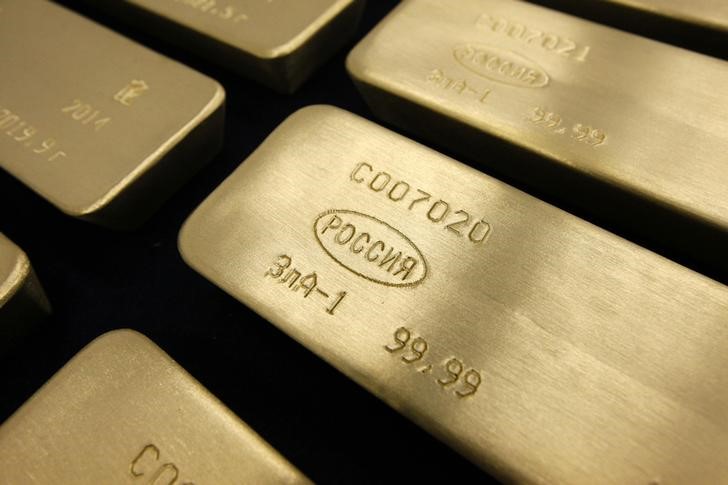
Gold prices rose slightly in Asian trade on Wednesday, recouping some overnight losses after stronger-than-expected U.S. consumer inflation data boosted the dollar and dented bets that interest rates will fall in the near-term.
Broader metal prices also rose on Wednesday, recovering some recent losses. Platinum and silver tumbled from recent peaks this week, as their outperforming gold drew in some profit-taking.
Still, safe haven demand for gold remained relatively underpinned by persistent concerns over U.S. President Donald Trump’s trade tariffs. Growing uncertainty over the Federal Reserve’s independence, amid growing calls from Trump and his allies for Chair Jerome Powell’s ouster, also factored into haven demand, as did tensions between Russia and Ukraine.
Spot gold rose 0.4% to $3,339.26 an ounce, while gold futures for September rose 0.3% to $3,345.40/oz by 01:32 ET (05:32 GMT).
Gold remains rangebound, other precious metals outperform
Despite seeing some gains this week, gold remained squarely within a $3,300-$3,500/oz trading range seen over the past three months. The yellow metal struggled to make headway amid increased speculation that gold prices were overbought after hitting record highs in April, with the yellow metal largely lagging other precious metals in recent months.
Platinum and silver raced past gold in recent months, with both metal prices reaching over decade peaks. Gains in both metals were in part driven by traders seeking more reasonably valued alternatives to gold, while expectations of improving demand and tightening supplies also helped.
Still, both metals retreated this week amid waning bets that the Fed will cut interest rates soon. Spot platinum steadied at $1,421.0/oz, while spot silver rose marginally to $37.8385/oz.
Dollar firms on sticky CPI, pressures metal prices
Broader metal prices were also quashed by strength in the dollar, which hit a three-week high on Tuesday after consumer price index inflation data read stronger than expected.
Among industrial metals, benchmark copper futures on the London Metal Exchange were flat at $9,639.70 a ton, while U.S. copper futures fell 0.4% to $5.4962 a pound.
Headline CPI read stronger than expected for June, albeit slightly. But the print still advanced from the prior month, raising concerns that inflation was turning sticky.
The CPI print also came amid increasing concerns over the inflationary effects of Trump’s trade tariffs.
The Fed has warned that it will keep interest rates unchanged until it has more clarity on the impact of Trump’s tariffs, with Tuesday’s print likely furthering this notion.
But the Fed’s stance has drawn increased ire from Trump and his allies, who were seen ramping up their calls for Powell’s departure and for interest rates to fall.
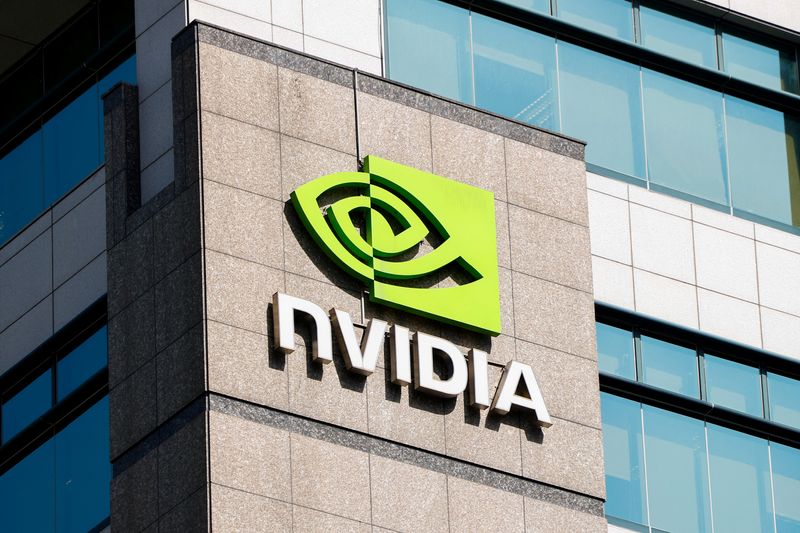
Semiconductor stocks rose on Tuesday after Nvidia (NASDAQ:NVDA) announced that it had received a green light to once again sell its artificial intelligence-enhanced chip in China.
Before the start of U.S. trading, shares of Nvidia had jumped by by more than 5%, lifting peers like Advanced Micro Devices (NASDAQ:AMD), Micron (NASDAQ:MU), Broadcom (NASDAQ:AVGO) and Marvell (NASDAQ:MRVL).
In Europe, regional chipmaking powerhouses like ASML (AS:ASML), ASM International (AS:ASMI), BE Semiconductor (AS:BESI), Infineon (ETR:IFXGn), and STMicroelectronics (EPA:STMPA) also rose.
Nvidia said on Monday that it will resume selling its H20 processor in China “soon,” as trade relations improve between Washington and Beijing, and after CEO Jensen Huang met with officials from both sides.
The AI-darling also announced a new graphical processing unit for China which it claimed was ideal for artificial intelligence smart factories and logistics.
Nvidia is “filing applications to sell" its H20 again and "the U.S. government has assured [...] that licenses will be granted,” the world’s most valuable listed company said in a statement.
The move comes after Washington lifted several restrictions on the export of chip technology to China, having recently allowed chip design majors including Synopsys (NASDAQ:SNPS) to restart sales in the country.
"[U]ncertainty around the U.S./China relationship [is] one key hurdle that could deter China’s offshore market in the near term, as we approach the August 12th U.S./China tariff truce expiration," analysts at Morgan Stanley said in a note, referencing the possible date when heightened U.S. levies could snap back into effect.
They added that "[w]hile it is too early to conclude," the developments "indicate some early signs" that U.S.-China trade relations were on the "right track."
Earlier this year, the White House had imposed even stricter licensing requirements for sales to China, effectively blocking Nvidia from selling its H20 chip in the nation. Nvidia had forecast at least $5.5 billion in charges due to the increased restrictions, underlining the importance of China to its operations.
But Washington and Beijing in May and June agreed to substantially lower their respective tariffs against each other, sparking hopes of a prolonged trade truce.
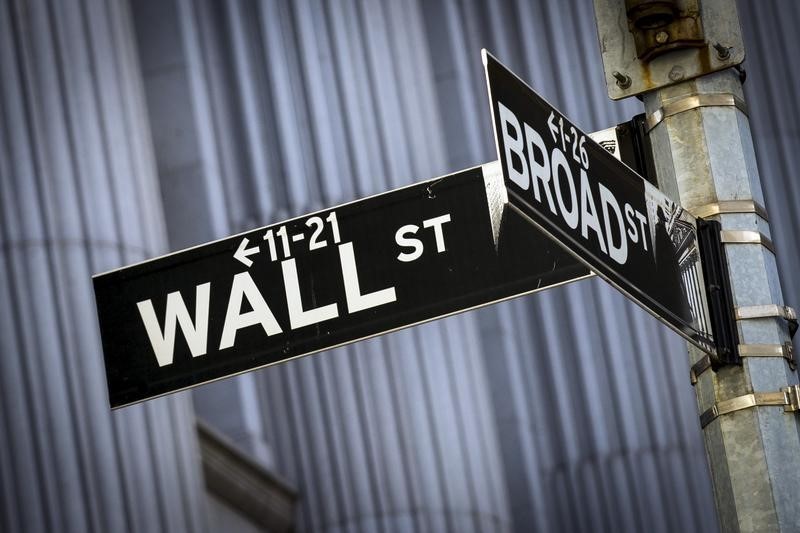
U.S. stock index futures fell Monday amid fears of an intensifying trade war after President Donald Trump slapped 30% tariffs on imports from Mexico and the European Union, after similar levies against Canada.
At 06:15 ET (10:15 GMT), Dow Jones Futures dropped 140 points, or 0.3%, S&P 500 Futures fell 19 points, or 0.3%, and Nasdaq 100 Futures slipped 65 points, or 0.3%.
The main Wall Street indices retreated last week, falling back from record levels, with the S&P 500, the NASDAQ Composite and the Dow Jones Industrial Average all snapping three-week winning streaks.
Trump imposes 30% tariffs on Mexico, EU
Trump over the weekend released more letters outlining trade tariffs on major U.S. trading partners, this time imposing a 30% levy on goods from Mexico and the European Union, respectively.
This came after Trump over the past week imposed tariffs on Japan, South Korea, Canada, and Brazil, as well as a 50% duty on all copper imports.
Trump’s tariffs will be effective from August 1, giving the targeted countries less than three weeks to reach a trade deal with Washington. He had postponed the deadline from July 9.
Speaking to reporters on Sunday, Trump said talks with South Korea and the EU were ongoing, with both countries seeking deals to avoid his steep tariffs.
Recent data showed U.S. customs duty collections surged to a record-high $113.3 billion gross in the first nine months of fiscal 2025 (the government’s fiscal year ends on September 30). Treasury Secretary Scott Bessent said this figure could reach $300 billion by December, representing a major source of fiscal revenue for the government.
CPI inflation, bank earnings due
The focus this week, away from Trump’s volatile trade policies, will be on consumer price index inflation data for June, due on Tuesday, as well as the new quarterly earnings season.
The June U.S. consumer price index is due on Tuesday, and the widely-watched inflation reading will offer Wall Street clues on when the Federal Reserve may next cut interest rates.
The CPI is expected to show a monthly rise of 0.3% in June, a rise from the 0.1% increase in the prior month, while the annual release is seen climbing to 2.6%, from 2.4% in May.
At its gathering in June, the U.S. central bank chose to leave borrowing costs unchanged at a target range of 4.25% to 4.5%, and Fed fund futures indicate a slim chance of a rate cut at the end-July meeting, but suggest easing in September is likely.
The new U.S. corporate earnings season kicks off in earnest this week, with major banks, including JPMorgan Chase (NYSE:JPM), Bank of America (NYSE:BAC) and Wells Fargo (NYSE:WFC), leading the way.
Results are also due from the likes of Netflix (NASDAQ:NFLX), Johnson & Johnson (NYSE:JNJ) and 3M Company (NYSE:MMM).
Crude pushes higher
Oil prices rose Monday as traders await news of potential additional U.S. sanctions on Russia that may affect global output.
At 06:15 ET, Brent futures climbed 1.5% to $71.42 a barrel, and U.S. West Texas Intermediate crude futures rose 1.6% to $69.57 a barrel.
Trump is due to make a "major statement" on Russia on Monday, having expressed frustration with Russian President Vladimir Putin due to the lack of progress in ending the war in Ukraine.
A bipartisan U.S. bill that would hit Russia with sanctions gained momentum last week in Congress, but it still awaits support from Trump.
European Union envoys are also seen to be close to agreeing another package of sanctions against Russia that would include a lower price cap on the country’s oil exports.

Gold prices rose in Asian trade on Friday, recouping some recent losses after safe haven demand was buoyed by U.S. President Donald Trump threatening more trade tariffs, while geopolitical tensions in the Middle East also helped.
Strength in the dollar– which was headed for a weekly gain– kept gains in gold and most other metals subdued on Friday. But silver and platinum were set for strong weekly gains, vastly outperforming gold as they notched fresh multi-year highs this week.
Among industrial metals, U.S. copper futures fell sharply from recent peaks, seeing some profit-taking after Trump’s tariff threat drove stellar gains in the red metal earlier this week.
Spot gold rose 0.5% to $3,341.27 an ounce, while gold futures for September rose 0.9% to $3,354.60/oz by 01:28 ET (05:28 GMT).
Trump’s Canada tariff threat, Middle East tensions boost havens
Trump on Thursday evening said he will impose 35% tariff on Canada from August 1, higher than his previously threatened 25% tariffs and also blindsiding Ottawa after some signs of improving trade relations.
The announcement sparked a risk-off move across major risk-driven assets, and spurred some gains in havens such as gold, and the yen.
On the geopolitical front, signs of little immediate deescalation in the Israel-Hamas war, as Jerusalem continued to launch attacks against the Gaza Strip, kept geopolitical tensions high in the Middle East.
U.S. efforts to broker a ceasefire appeared to have yielded little progress in the past week, despite the White House’s claims that a deal was close.
This trend offered gold some relief, although the yellow metal was nursing a muted weekly performance as it came under pressure from a recovery in the dollar. Speculation over the path of U.S. interest rates also weighed on gold, with the yellow metal remaining squarely within a $3,300/oz to $3,500/oz trading range seen for most of the year.
Platinum, silver greatly outpace gold in recent weeks
Platinum and silver prices steadied near multi-year peaks, and were headed for weekly gains of between 1.9% and 3%. Both metals shot past gold in recent weeks, as they both benefited from increased speculation over tighter supplies and increasing demand in the coming months.
Platinum was set for a sixth consecutive week of gains, as the white metal continued to benefit from a bullish industry report released in late-May. Platinum futures rose 0.3% to $1,420.25/oz and were close a 11-year high.
Silver futures rose for a third straight week, and were up 2.2% to $38.140/oz on Friday– their highest level in nearly 14 years.
Among industrial metals, COMEX U.S. copper futures fell 1.2% to $5.5620 a pound, seeing extended profit-taking after Trump’s threat of a 50% tariff on the red metal sparked strong gains this week. U.S. copper futures had briefly hit record highs.
Benchmark copper futures on the London Metal Exchange were flat at $9,700.55 a ton.
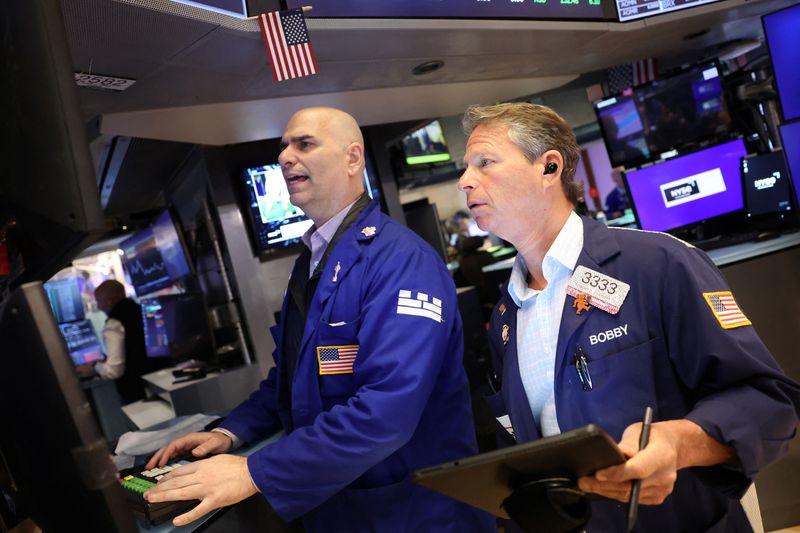
U.S. stock futures inch lower as investors assess a new salvo in President Donald Trump’s ongoing tariff agenda. Brazil is the latest target of Trump’s levies, with the president hitting out at the nation over its treatment of a political ally. Elsewhere, minutes from the Federal Reserve’s latest meeting suggest that policymakers believe interest rate cuts could be appropriate this year, while WK Kellogg (NYSE:KLG) shares spike after-hours following a report that Ferrero is nearing a purchase of the cereal maker.
1. Futures lower
U.S. stock futures pointed lower on Thursday after Trump threatened Brazil with elevated tariffs, opening up a fresh front in his aggressive trade agenda.
By 03:42 ET (07:42 GMT), the Dow futures contract had fallen by 125 points, or 0.3%, S&P 500 futures had dropped by 15 points, or 0.2%, and Nasdaq 100 futures had dipped by 47 points, or 0.2%.
The main averages on Wall Street rose in the prior session, buoyed by meeting minutes from the Federal Reserve which sparked hopes that the central bank will eventually slash interest rates this year.
Amid the gains, shares of artificial intelligence-darling Nvidia (NASDAQ:NVDA) jumped by 1.8%, giving it a market capitalization of $3.97 trillion. During the session, the company briefly became the first to ever notch a market value of $4 trillion.
Nvidia’s increase fueled a rise in the tech-heavy Nasdaq Composite to an all-time closing high.
"[T]he big driver of the recent advance is a belief that tariffs will either be watered down from the current threat levels and/or have only a benign effect on inflation while other categories of the economy [...] cause prices in aggregate to move in a disinflationary direction, opening the door for the Fed to resume policy easing," analysts at Vital Knowledge said in a note to clients.
2. Trump threatens Brazil with 50% tariffs
Still, Trump’s continued trade battles have led to some investors remaining cautious around the broader trajectory of the economy.
In the latest salvo in what has been a flurry of trade-related headlines this week, the president said he planned to slap a 50% tariff on all imports from Brazil. The levies, which would come into effect from August 1, were partially a response to Trump’s anger at the perceived mistreatment of former Brazilian President Jair Bolsonaro, his political ally in the South American country.
Trump wrote in a letter to Brazil’s current President Luiz Inácio Lula da Silva that the treatment of Bolsonaro -- who is facing a trial for attempting to carry out a coup -- is "an international disgrace."
The 50% levies would be the highest rate out of a slew of letters sent out by Trump this week, which were issued following his decision to postpone a deadline for the implementation of his so-called "reciprocal" duties to August 1. They had previously been set to come into force on Wednesday, after an initial pause in April.
Analysts have suggested that the move is more politically motivated than related to trade grievances. Brazil is the 15th-largest U.S. trading partner and a rare net importer of American goods.
Separately, Trump also said he would place a 50% tariff on imported copper, reiterating a statement he made on Wednesday. Trump wrote on his social media platform that he had received a national security report detailing the importance of the red metal.
3. Fed minutes in focus
Trump’s tariffs remain one of the major driving forces behind an uptick in broad-based uncertainty that has dented consumer confidence and complicated investment decisions for businesses.
The Fed has also cited the levies as a key reason why it has chosen to largely adopt a wait-and-see attitude to future interest rate reductions. Many economists have flagged that the tariffs could push up inflationary pressures and weigh on growth.
Minutes from the Fed’s latest gathering in June appeared to bolster this feeling, with the document showing that just "a couple" of policymakers found it appropriate to consider cutting borrowing costs as soon as this month. The comments come even as Trump himself has frequently criticized Chair Jerome Powell for not moving quickly to slash rates, even going as far as calling for Powell’s resignation.
Powell has stayed mostly steadfast in his support of a more cautious Fed stance in recent weeks, but has indicated that a cut is still possible this year. "Most participants" at the Fed meeting believed a drawdown would be appropriate later in 2025, with price shocks from tariffs tipped to be "temporary or modest," the minutes showed.
4. WK Kellogg spikes on report Ferrero nearing acquisition - WSJ
Shares of WK Kellogg surged in extended hours trading after the Wall Street Journal reported that family-owned Italian candy group Ferrero is closing in on a roughly $3 billion deal to buy the cereal maker.
Citing people familiar with the matter, the WSJ reported that Ferrero -- the company behind brands like Ferrero Rocher and Nutella -- could finalize the deal for WK Kellogg as soon as this week should there be no last minute wrinkles in the negotiations.
A deal would bring Ferrero together with WK Kellogg, the firm famous for its breakfast cereals like Froot Loops and Rice Krispies that have become supermarket staples.
Ferrero has been on the hunt for U.S. acquisitions as it eyes international expansion and growth in its offerings. It has previously purchased Blue Bunny-manufacturer Wells Enterprises and rival Nestle’s U.S. chocolate unit.
WK Kellogg, which is itself a result of Kellogg spinning off its North American cereal business around two years ago, is facing a shift in behavior among inflation-hit and more health-conscious shoppers.
5. TSMC sales top forecasts
Taiwan Semiconductor Manufacturing Co (TSMC) (TW:2330) on Thursday posted a 39% jump in second-quarter sales, surpassing market expectations thanks to strong global demand for AI chips.
According to the company’s monthly sales, the total figure for the April-June period came in at NT$933.8 billion ($31.9 billion), exceeding LSEG estimates of NTT$927.83 billion.
It also topped TSMC’s prior guidance range of $28.4 billion to $29.2 billion issued in April.
The strong revenue performance underscores robust global appetite for advanced chips, particularly those tailored for artificial intelligence workloads.
TSMC, the world’s largest contract chipmaker, counts key clients such as Nvidia and iPhone-maker Apple (NASDAQ:AAPL) among its customer base.
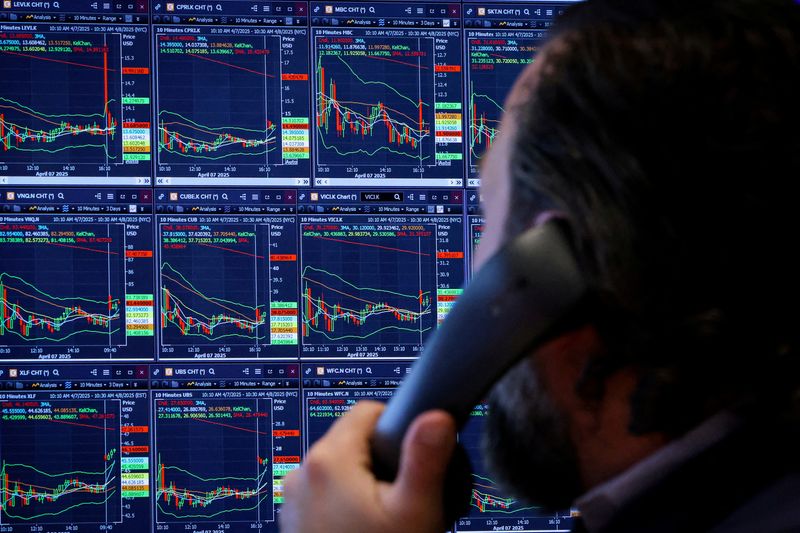
U.S. stock futures are mostly quiet, with traders digesting a slew of tariff news this week and gearing up for minutes from the Federal Reserve’s June policy meeting. President Donald Trump insists that his new tariff deadline will not be altered, while hinting at broadening his trade agenda to include a 50% tariff on copper. Meanwhile, White House economic adviser Kevin Hassett is reportedly a major contender to be Trump’s pick to replace current Fed Chair Jerome Powell.
1. Futures muted
U.S. stock futures were muted on Wednesday as investors assessed tariff comments from Trump and looked ahead to the release of minutes from the Federal Reserve’s latest meeting.
By 03:31 ET (07:31 GMT), the Dow futures contract were broadly unchanged, S&P 500 futures had dropped by 3 points, or 0.1%, and Nasdaq 100 futures had edged down by 14 points, or 0.1%.
The main averages on Wall Street were mixed at the end of trading on Tuesday, with sentiment broadly steady despite a flurry of trade-related headlines. Trump sent out letters to a slew of countries detailing the elevated levies they now face, but markets took heart from the White House’s decision to extend the deadline for these duties to kick in to August 1. The tariffs were previously set to come into effect today.
“Market participants have largely shrugged off President Trump’s latest set of threats to raise tariffs on a range of countries, focusing on the fact that today’s ;deadline’ for re-imposing the “reciprocal tariffs” from 2nd April has, as widely expected, been extended,” said Jonas Goltermann, Deputy Chief Markets Economist at Capital Economics, in a note.
2. Trump says copper tariffs incoming
Still, Trump insisted at a cabinet meeting on Tuesday that the new deadline will not be pushed back any further, after stating earlier this week that it was “not 100% firm.” He added that negotiations are going well with the European Union and China, but flagged that the EU is days away from receiving its own tariff letter.
The president also raised the prospect of a 50% tariff on imported copper, in the latest sign that his aggressive trade agenda involves not just countries, but specific sectors as well. Copper is a particularly crucial metal who uses apply to vehicle production, military hardware, power grid infrastructure and more.
Other levies on everything from pharmaceuticals to semiconductors could soon be unveiled, Trump suggested.
Meanwhile, Treasury Secretary Scott Bessent claimed that Trump’s levies have raked in $100 billion in income for the U.S. this year and predicted that the number could climb to $300 billion by the end of December. Bessent flagged that the major collections began in the second quarter, when Trump instituted a baseline 10% duty and lifted tariffs on items like steel, aluminum and autos.
Analysts have noted that tariff revenues have become key for the White House, as the funds could help offset the cost of a multi-trillion-dollar tax-cuts and spending package which Trump signed into law last week.
3. FOMC minutes ahead
Traders are now keeping tabs on the upcoming publication of the minutes from the Fed’s June meeting, as they hunt for possible insights into how the central bank sees interest rates evolving in the coming months.
Policymakers left borrowing costs unchanged at a target range of 4.25% to 4.5% at the gathering, citing the prudence of a wait-and-see approach to future decisions as the impact of Trump’s tariffs becomes clearer.
At recent events, Fed Chair Jerome Powell has reiterated the argument for this cautious stance, but indicated that officials would probably have already been cutting rates if not for the uncertainty around the tariffs.
Investors have largely stuck to bets that the Fed will slash rates twice before the end of 2025, with the first expected to come in September, potentially followed by another in December.
But the trajectory remains murky, especially as Powell faces intensifying pressure from Trump to quickly reduce rates. Trump again hit out at the Fed leader on Tuesday, calling him "terrible" and urging him to resign so he can appoint a new chair who will lower borrowing costs.
4. Hassett among top contenders to become next Fed Chair - WSJ
White House economic adviser Kevin Hassett is emerging as a “serious contender” to replace Powell as the next Fed Chair, the Wall Street Journal reported on Tuesday.
Hassett is one of Trump’s closest economic advisers, and is now seen as a preferred pick over earlier favorite Kevin Warsh, a former Fed governor, the WSJ reported.
Hassett met Trump over the Fed job at least twice in June, the WSJ report said, citing people familiar with the matter.
The WSJ report comes amid speculation that Trump could expedite his selection of Powell’s successor, possibly unveiling the decision later this year. Trump had appointed Powell to the post in 2017.
5. Oil subdued
Crude prices hovered around the flatline after industry data showed a sharp increase in U.S. crude inventories amid concerns tariffs could curb demand for oil.
At 03:30 ET, Brent futures had inched up by 0.1% to $70.19 a barrel and U.S. West Texas Intermediate crude futures were mostly unchanged at $68.36 a barrel.
Both contracts climbed to a two-week high on Tuesday, driven by supply disruption concerns which stemmed from fresh Houthi attacks on Red Sea shipping lanes.
The American Petroleum Institute reported during the previous session a sharp, unexpected rise in U.S. crude oil inventories for the week ending on July 4, with a build of 7.1 million barrels, far exceeding the forecast 2.8 million‑barrel draw.
Market watchers now await confirmation from the Energy Information Administration report, due later in the day, especially as the Independence Day holiday weekend usually sees strong travel demand.

Gold prices steadied in Asian trade on Tuesday after U.S. President Donald Trump’s tariff threats spurred some safe haven demand, although a recovery in the dollar limited gains in metal markets.
The yellow metal advanced on Monday after Trump released letters outlining steep tariffs against several major Asian and African countries. But Trump also postponed his tariff deadline to August 1 and signaled openness to more trade talks.
The dollar firmed on Trump’s tariff threat, while expectations of steady U.S. rates in the near-term also benefited the greenback. Strength in the dollar pressured metal markets.
Spot gold fell marginally to $3,334.22 an ounce, while gold futures for September were flat at $3,343.70/oz by 01:22 ET (05:22 GMT).
Trump tariff comments buoy risk, limit gold upside
Trump told reporters on Monday that he was not a “100% firm” on his August 1 deadline, and that his administration was open to more trade dialogue.
His comments, coupled with the recent postponement of the July 9 deadline, spurred some bets that the president will not make good on his tariff threats.
This notion boosted risk appetite on Tuesday, with Asian stocks advancing and Wall Street futures reversing early losses.
Still, Trump released a slew of letters on Monday outlining higher trade tariffs on several Asian and African countries. These include a 25% tariff on South Korea, Japan, Malaysia, and Kazakhstan, a 30% duty on South Africa, a 32% duty on Indonesia, a 35% levy on Bangladesh, and a 36% levy on Thailand.
The letters had battered risk appetite, sparking steep losses on Wall Street while also helping gold prices advance.
The yellow metal was nursing a largely rangebound performance in recent weeks, as risk-aversion around Trump’s tariffs was limited, while strong U.S. economic data saw traders pricing in a smaller chance that U.S. interest rates will fall in the near-term.
But gold still remained in sight of a $3,500 record high hit earlier this year.
Dollar strength weighs on metal prices, Fed minutes awaited
The dollar fell slightly in Asian trade on Tuesday, but was sitting on a sharp overnight bounce following Trump’s tariff letters.
The greenback largely maintained its rebound from recent three-year lows, especially as strong U.S. economic data fueled bets that the Federal Reserve will not cut interest rates in the coming months. Trump’s tariff threats also spurred some demand for the greenback, amid fears that the levies will be inflationary for the U.S. economy.
Strength in the dollar weighed on metal prices, limiting their upside on Tuesday. Platinum futures rose 0.1% to $1,383.75/oz, while silver futures rose 0.3% to $37.008/oz, with both metals remaining close to recent multi-year highs.
Among industrial metals, benchmark copper futures on the London Metal Exchange rose 0.2% to $9,839.80 a ton, while U.S. copper futures rose 0.4% to $5.0260 a pound.
The minutes of the Fed’s June meeting are due later this week, and are expected to provide more insight into the central bank’s plans to cut interest rates. The Fed had maintained a largely hawkish stance during the meeting, remaining non-committal towards further easing.
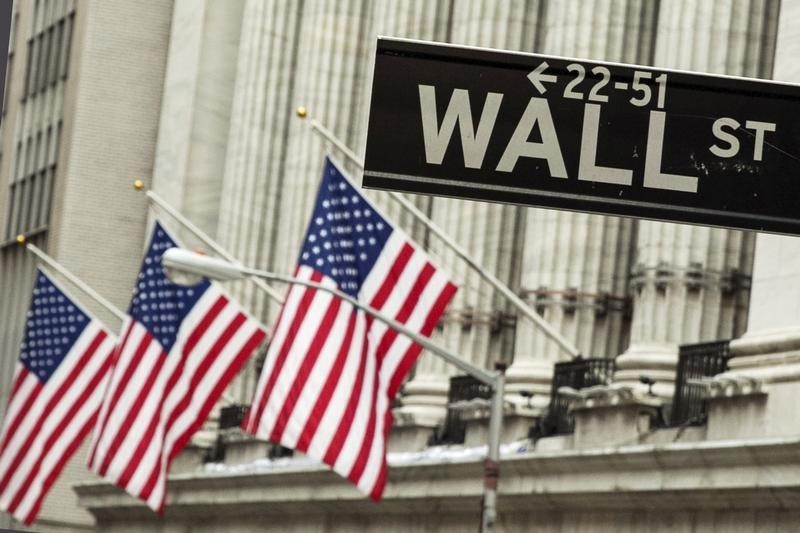
U.S. stock index futures fell Monday amid growing uncertainty over President Donald Trump’s plans for trade tariffs.
At 05:15 ET (09:15 GMT), Dow Jones Futures fell 115 points, or 0.3%, S&P 500 Futures dropped 32 points, or 0.5%, and Nasdaq 100 Futures slipped 145 points, or 0.6%.
The main averages were closed on Friday for the Independence Day holiday, and a period of profit-taking looks likely after the S&P 500 and the Nasdaq hit record highs on Thursday.
Caution over trade negotiations
Wall Street is set to start the new week on a cautious note with the expiration of a pause to Trump’s heightened reciprocal tariffs set to end on July 9, with the trade talks having only yielded preliminary deals with the United Kingdom and Vietnam, as well as a trade truce with China.
Trump has said that the White House will shortly begin to send out letters to U.S trading partners outlining their new tariff rates, although some confusion has surrounded when the levies would come into effect, with media reports suggesting that rates may not kick in until August 1.
Commerce Secretary Howard Lutnick told reporters on Sunday that Trump will be setting the rates and potential deals now, while Treasury Secretary Scott Bessent had earlier said the tariffs will be imposed as outlined in April if no trade deals were reached by August 1.
This left markets uncertain over just how high Trump’s tariffs will be, given that the president had in early-April announced tariffs going as high as 50% on major economies, while he also said over the weekend that the rates could reach 60% or 70%.
Adding to the uncertainty, Trump also said that countries aligned with the BRICS bloc will face an extra levy over allegedly anti-American practices.
Trump has repeatedly criticized the bloc, which consists of founding members Brazil, Russia, India, China, and South Africa, over its efforts to develop new trade alternatives to the United States.
Fed minutes due Wednesday
There’s little on the economic data slate Monday, and so eyes are likely to turn to the release of the minutes of the latest Federal Reserve policy meeting on Wednesday, with investors keen for more insight into how policymakers see interest rates evolving over the rest of the year.
At its gathering in June, the U.S. central bank chose to leave borrowing costs unchanged at a target range of 4.25% to 4.5%, arguing that a wait-and-see approach continued to be appropriate as more clarity emerged around the impact of Trump’s tariffs on the broader economy.
Tesla hit hard
There are only a few major companies scheduled to report earnings this week, including Delta Air Lines (NYSE:DAL), packaged foods group Conagra Brands (NYSE:CAG) and jeans-maker Levi Strauss (NYSE:LEVI).
Elsewhere, Tesla (NASDAQ:TSLA) shares fell sharply premarket after CEO Elon Musk said he will launch a new political party, as investors fear that the move will likely further divert his attention away from the company.
Brokerage firm Wedbush warned in a Sunday note that Musk diving deeper into politics is “exactly the opposite direction” that Tesla investors and shareholders want from the CEO, especially as the electric car company grapples with declining sales and prepares a pivot into autonomous vehicles.
Musk’s announcement of the “America Party” also comes amid a bitter public feud between the Tesla CEO and U.S. President Donald Trump, especially over the recently-approved “Big Beautiful Bill.”
Crude bounces from OPEC+-inspired losses
Crude prices rose Monday, overturning earlier losses after OPEC+ announced plans to increase output more than expected in August.
At 05:15 ET, Brent futures climbed 0.3% to $68.47 a barrel and U.S. West Texas Intermediate crude futures rose 0.5% to $66.82 a barrel.
The Organization of the Petroleum Exporting Countries and its allies, a group known as OPEC+, announced on Saturday that it will increase oil output by 548,000 barrels per day (bpd) in August.
The hike is larger than the 411,000 bpd increases already implemented for May, June, and July. The group also warned that it will consider another 548,000 bpd hike in September at the next meeting on August 3.
It marks a continued rollback of the voluntary 2.2 million bpd in cuts that major producers like Saudi Arabia and Russia had initiated earlier this year to support prices.
However, the market was also supported by the news that Saudi Arabia raised the August price for its flagship Arab Light crude to a four-month high for Asia, in a show of confidence in oil demand by the world’s largest crude exporter.
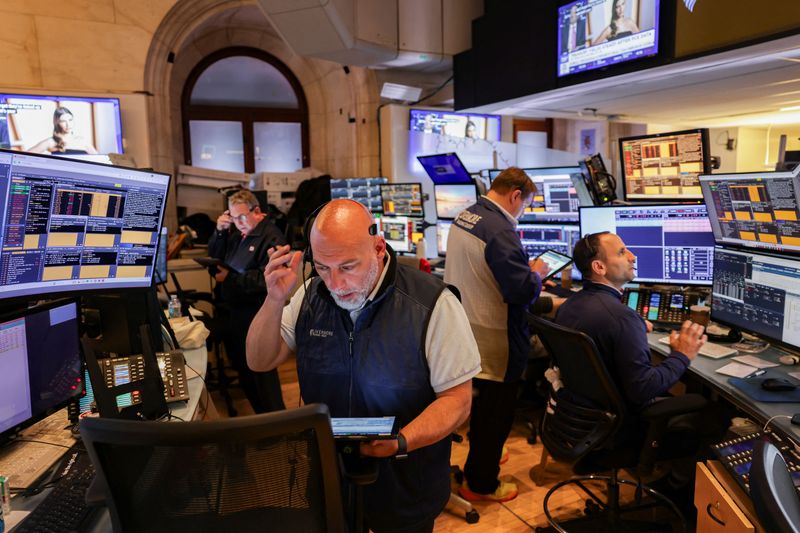
Two major U.S. stock average log fresh record closing highs to end a holiday-shortened trading week, although the buoyant mood fails to extend into Europe with uncertainty still swirling around an aggressive U.S. trade agenda. The U.S. Congress passes President Donald Trump’s giant policy bill, in a key legislative win that came despite some intraparty detractors. Trump also suggests Hamas could deliver its decision on a temporary ceasefire with Israel in the coming hours.
1. S&P 500, Nasdaq notch record closes
The benchmark S&P 500 and tech-heavy Nasdaq Composite both logged fresh all-time peaks on Thursday, as investors cheered a strong U.S. jobs report and shrugged off predictions that the Federal Reserve would now opt not to slash interest rates this month.
By the end of trading on the final day of a holiday-shortened week, the S&P 500 had climbed by 0.8% and the Nasdaq had advanced by 1.0%. The blue-chip Dow Jones Industrial Average also gained 0.7%, hovering within striking distance of its own record high. Stock markets in the U.S. will be shuttered on Friday for the Independence Day holiday.
Labor Department data showed that the U.S. added more roles than anticipated in June, although the numbers masked a slowdown in private hiring to an eight-month low. The unemployment also ticked down to 4.1%, but this was partly driven by more Americans choosing to leave the workforce, while a decline in the length of the average work week suggested that businesses may be ratcheting down hours.
Still, the figures underlined broad resilience in the labor market that, coupled with recently benign inflationary pressures, could persuade Fed policymakers to hold off on cutting borrowing costs at their next two-day gathering on July 29-30.
Meanwhile, in individual stocks, Nvidia (NASDAQ:NVDA)’s market capitalization surged to nearly $4 trillion. The designer of high-end artificial intelligence chips and focal point of a boom in enthusiasm around the nascent technology is now on pace to become the most valuable company in history.
2. Congress passes Trump’s signature policy bill
The House of Representatives approved the Senate’s version of President Trump’s massive tax-cuts and spending bill, as Republicans in the lower chamber won over party holdouts to overcome staunch Democratic opposition.
It marks a significant victory for Trump, who has invested much of his political capital into pushing the bill through Congress prior to a self-imposed July 4 deadline. Trump is now due to sign it into law at an event on Friday.
Trump has argued that the measures -- which included an extension to his 2017 tax cuts and other promised tax reductions as well as elevated spending on defense and border security -- will fuel economic growth. He told reporters that the bill would now put the U.S. on a "rocket ship."
But the bill’s detractors, including a handful of Republicans, have voiced concerns around its impact on the nation’s finances. Key food-assistance and health care programs would also be cut, and tax breaks for clean energy projects rolled back, to help offset the costs of the bill.
The Congressional Budget Office has estimated that it will add more than $3 trillion to the already sky-high U.S. debt pile and remove health coverage for millions of Americans. The White House has disputed the forecasts.
3. Trump to send out tariff letters
But, even with the unexpectedly solid labor market figures and Trump’s sprawling policy bill now in the rearview mirror, lingering uncertainty over U.S. tariffs has dampened what was an otherwise upbeat vibe heading into the Fourth of July weekend.
Attention is now turning to the upcoming expiration of a pause to sweeping "reciprocal" levies next week, with investors unclear over how Trump will approach the deadline.
Despite claims at the beginning of the 90-day delay that the Trump administration would pursue individual trade deals with dozens of countries, Washington has only revealed framework pacts with three nations: China, Britain and, earlier this week, Vietnam. Trump has suggested that a "couple" more could soon be revealed.
But the president has appeared to pivot away from the goal of securing a raft of these agreements, saying that he will start sending letters out to trading partners on Friday specifying what tariff rates they will incur on imported goods into the U.S.
He seemed to acknowledge the difficulty of negotiating trade deals with as many as 170 countries, saying "they’re very much more complicated."
4. Trump expects Hamas ceasefire decision in 24 hours
Elsewhere, Trump said it will be known in 24 hours if the Palestinian militant group Hamas has agreed to accept a ceasefire deal with Israel.
Both sides have been engaged in brutal fighting for decades, but the latest bout of violence began in October 2023 when Hamas attacked Israel.
Trump noted earlier this week that Israel had agreed to the conditions of a 60-day halt to hostilities that could open the door to a more permanent end to the war.
Citing a source close to Hamas, Reuters reported that the group was seeking guarantees that the U.S.-backed framework truce would lead to peace.
Meanwhile, Trump hinted that the Abraham Accords, a deal signed in his first term that aimed to normalize relations between Israel and some Gulf states, could be expanded. "I think a lot of people are going to be joining the Abraham Accords," he said.
5. Oil prices choppy
Crude prices hovered around the flatline in thin trading ahead of the weekend’s OPEC+ meeting, which is expected to result in an increase in production.
At 03:42 ET, Brent futures dropped 0.1% to $68.75 a barrel and U.S. West Texas Intermediate crude futures added 0.1% to $67.05 a barrel.
Both contracts were up between 1% to 2% this week, bouncing back from double-digit losses during the prior week.
The Organization of the Petroleum Exporting Countries and its allies, known as OPEC+, is expected to once again hike production by 411,000 barrels a day in August, at the weekend’s meeting, following similar hikes in the past three months.
The production hikes come as the OPEC+ scales back two years of sharp production cuts, in part to offset the economic impact of persistently low oil prices.
Elsewhere, U.S. news website Axios reported on Thursday that the U.S. was planning to meet with Iran next week to restart nuclear talk, while Iran Foreign Minister Abbas Araqchi said Tehran remains committed to the nuclear Non-Proliferation Treaty.

